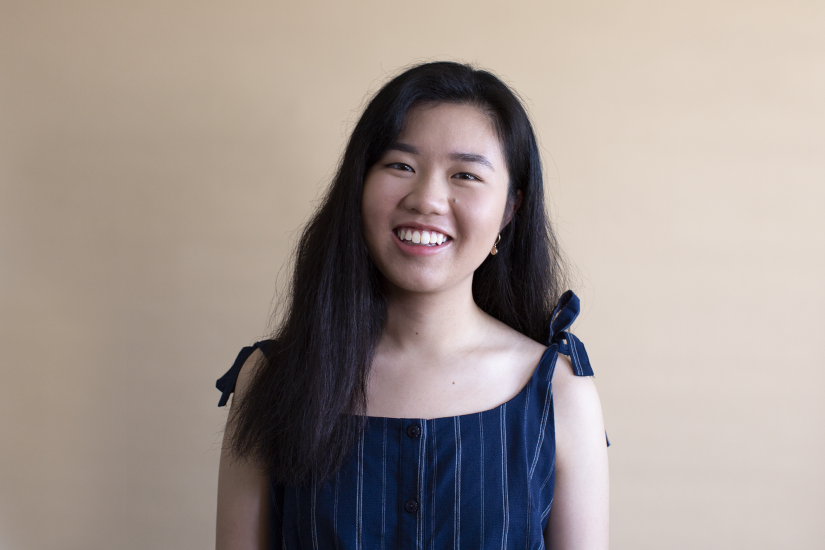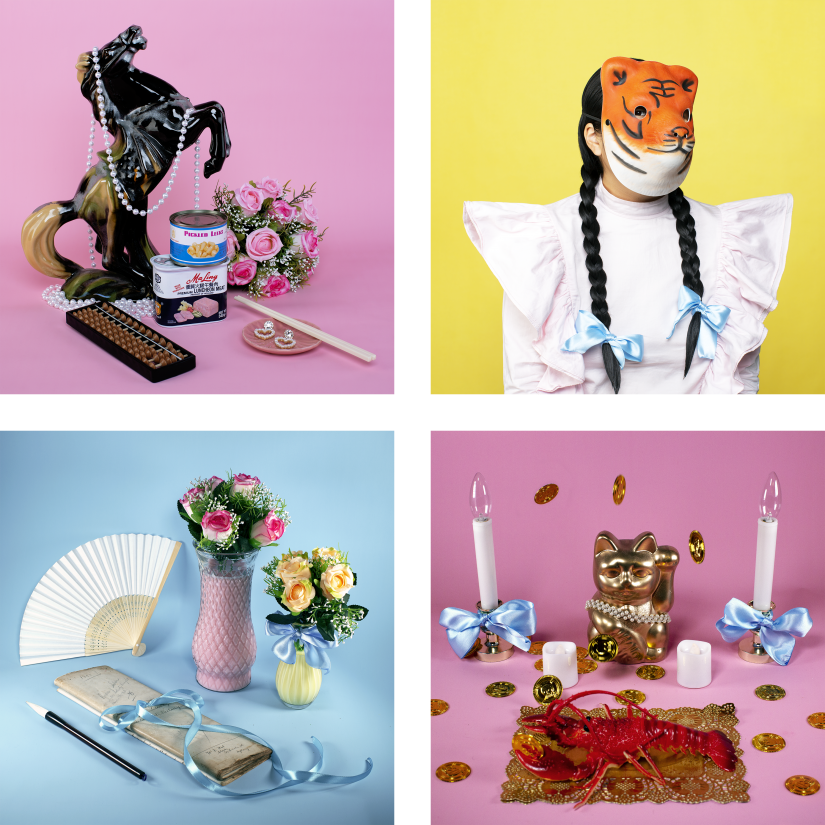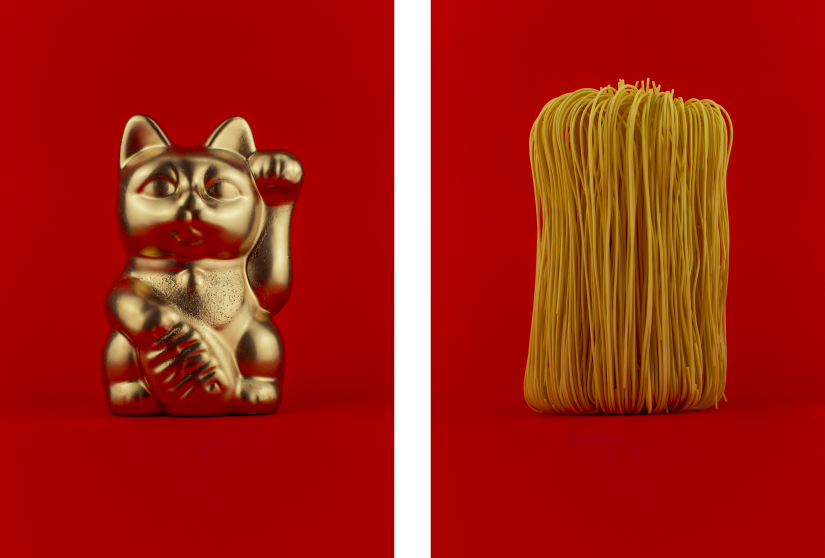A snapshot between two worlds
Everyone comes from somewhere – but some of us never feel quite at home no matter where we go.
For Juliet Wong, a student in the UTS Bachelor of Design in Photography, this feeling became the catalyst for her graduation project, a studio photography collection called OZZIE DREAM. The project was born of Wong’s experience as the child of immigrant parents, and explored complex themes of identity, culture and belonging.

“I was born in Australia, so I’m considered second generation Australian. My dad came here when he was in high school and he speaks predominantly English to me,” she says.
“Language plays such an important role in understanding the traditions, so a lot of things are lost in translation as a result. I think that’s why I’ve never been able to express the way I felt – my experience of being Chinese Australian – so I rely on expressing it visually instead.”
The project was comprised of a series of studio photos of stereotypical Chinese dollar shop items, such as waving cat figurines, plastic chopsticks and fake pearls. The objects represented what Wong refers as her own ‘bad attempts’ at connecting with her Chinese heritage.

Juliet Wong, clockwise from top left: 'Dinnertime', 'Where are you from?', 'Importance' and 'Pray', OZZIE DREAM, 2018
“Whenever I see objects like this – like those really cheap, generic, made-in-China goods – it resembles how superficial I feel my connection is,” she says.
“I’m very interested in studio photography and the false realities I can create with this type of photography. The work emerged from blending the two, creating this false reality and merging that with the way I feel about my own cultural identity.”
While her journey towards understanding her own identity has been a long-term pursuit, the UTS photography degree finally gave Wong an opportunity to explore her own story in a concrete way, thanks to tutors who really pushed her to think about her practice and the sort of perspectives she wanted to showcase in her work. It also helped her build fundamental skills in research and concept development.
And, while OZZIE DREAM was the final project of her degree, it wasn’t the first to touch on ideas of culture and heritage – an earlier project called Good Luck, Bad Luck addressed Chinese superstitions and how they’re passed down through culture and history.

Juliet Wong, 'Cat' and 'Noodle', Good Luck Bad Luck
As well as providing a creative outlet, these pieces also helped Wong answer some of the bigger questions around what it means to embody multiple identities at once.
“Making work about identity means putting yourself about there, and it can be quite daunting,” she says.
“But the process of creating OZZIE DREAM allowed me to reflect on experiences I’ve had growing up Chinese Australian, both good and bad. I’m comfortable being in the middle ground, and I hope this series encourages everyone in that space to explore and talk more about their own personal experiences, and to know that there are people out there just like them.”
Having completed her final year of studies in 2018, Wong is working as a freelance photographer and continuing to develop her art practice on the side.
